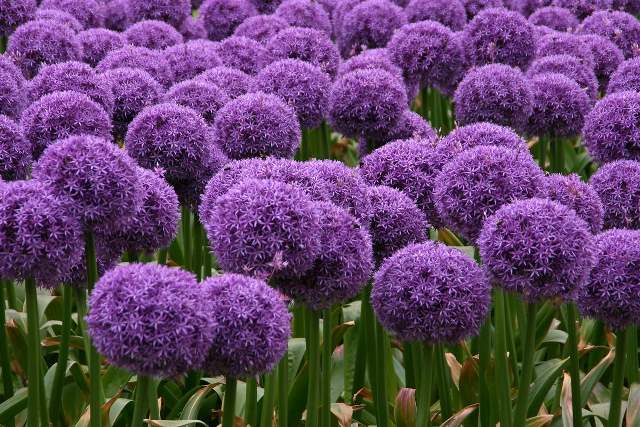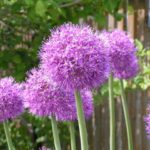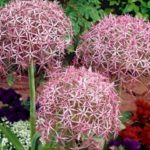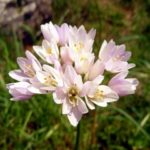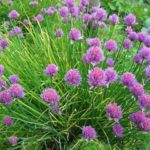Onion is not only a plant that is actively used in cooking. More than six hundred species, including decorative ones, belong to the genus Allium Botany. They grow everywhere - in the New Earth, and in southern Africa. Planted decorative varieties of onions can be in the country, flower beds, in the garden. They are quite unpretentious, but they are distinguished by the original color, shape and long flowering period. Only from different varieties of such a flower can you create a so-called garden of continuous flowering. On the cultivation and planting of decorative onions in the ground today's article.
Table of contents
What is a decorative perennial bow?
Ornamental onion varieties are attractive flowering plants of the most diverse types. There are both very tiny and high enough specimens.
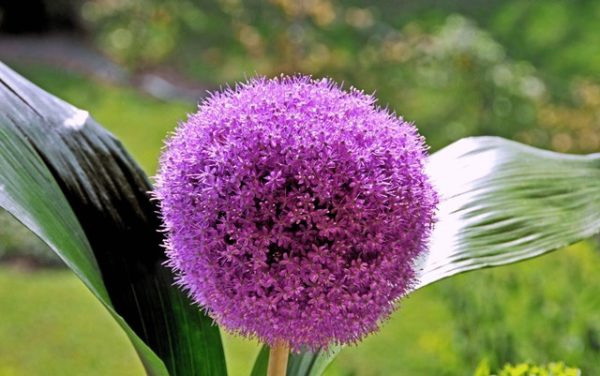
Most of these types of onions are perennial, which means that you do not have to buy seeds every year, grow seedlings or pick picking.
Alliums feature, because of which they are practically not used in floristics alone, is the high content of essential oils with a specific odor. For the same reason, they are best grown outdoors. These flowers have long been used in landscape design:
- when forming alpine hills or stone gardens;
- at registration of borders or group landings;
- for decoration of garden lawns, parks;
- use plants as dried flowers.
The most popular varieties of decorative onions
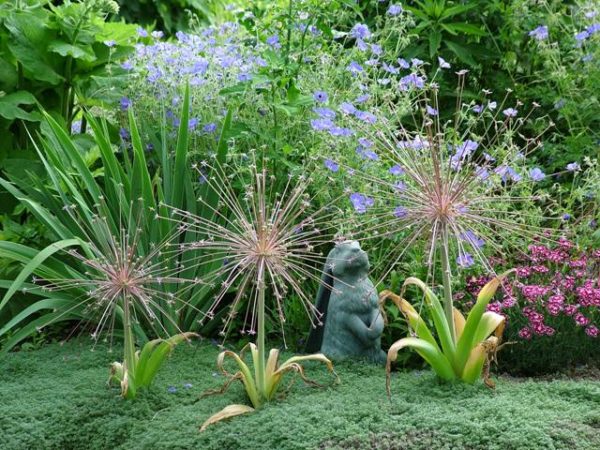
In gardening, use many varieties of such flora, as well as hybrids. Among the popular species can be distinguished chives, aflatunsky, Karatavsky, Roseum, bow Christoph.
- Chives perfectly familiar to lovers of greenery. You can grow it on the street, and at home in pots. It reproduces very well and grows, it looks very decorative. At the time of flowering leaves may turn yellow. In such cases, they should be cut off, and after a couple of days, new ones will appear.
- Aflatunsky - the most popular variety of decorative alliuma. He is known under the name of the Dutch. Spherical inflorescences consist of small flowers of violet color.
- Karatava - a variety that looks particularly good on mini flower beds and alpine slides. Short but hardy. Inflorescences can be purple, pink, cream.
- Rozeum - A variety that is distinguished by pale pink flowers of small size.
- Christoph's Bow - the popular decorative grade used on big beds. The diameter of the balls, which consist of individual flowers, reaches 18-20 cm.
- Aflatunsky
- Karatava
- Christoph's Bow
- Rozeum
- Chives
Rules for planting in open ground
The plant is planted in the fall (early-flowering varieties), in September, or in spring (late flowering varieties), in May or late April.
For decorative onions, sunny areas are chosen - the more light, the more beautiful the coloring of the leaves and the more saturated the color of the buds.
Care for allium blooming
It is very important to ensure that such a bow has enough moisture during the growing season - without it, it stops chasing the leaves. Later, he practically does not need watering.
It is not necessary to cover the plant for winter, and allium should be transplanted every four to five years.
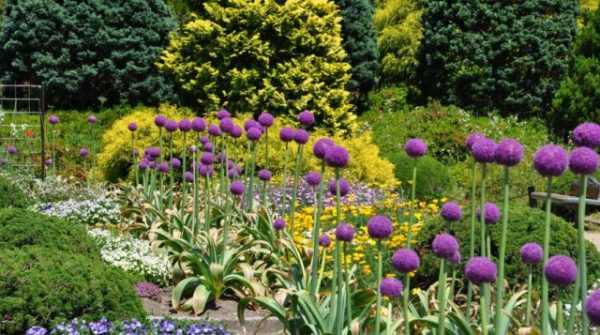
Alliums get along perfectly with irises, peonies, delphinium, poppy seeds.In preparation for flowering leaves die off, but they can not tear off. With their help, plants accumulate nutrients in the bulb.
This onion is propagated by bulbs, bulbs or seeds. It is better to divide the overgrown bulbs in the fall, during transplantation. To collect the seed material, the first inflorescences are used, and they should be allowed to fully bloom.
Diseases and pests of a decorative onion flower
- Perinosporosis - caused by fungi. The leaves and flowers turn yellow, dry, in wet weather they show a violet bloom. The reason may be too much nitrogen fertilizer, infection from other plants. The bulbs are treated with a fungicide before planting, and the diseased flowers and the soil around them are treated with Bordeaux mixture.
- Root mite, onion fly - these pests often affect the alliums. To protect the plants, warm up the bulbs at a temperature of up to 40 degrees for 12 hours before planting.Plants can be sprinkled with tobacco dust, ash, sprinkle dichlorvos.
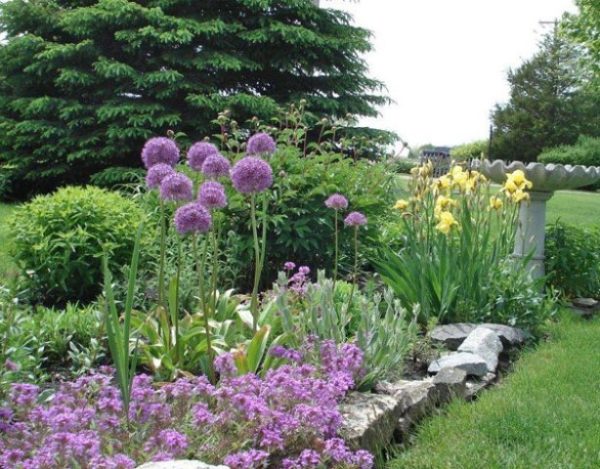
Application and combination with other plants in the open garden
Planted a flower on the alpine hills, in flower beds, stone gardens, used as a curb. Giant blue or blue balls are especially popular. Large varieties are used independently, and they should be planted at a great distance from each other. Small varieties can be planted nearby, "islands": so they look more advantageous.
Since alliums may have dried leaves during the flowering period, it is better to plant low-growing flowers next to them: delphiniums, hosts. Similar plants look very attractive alongside lupins, poppies, peonies, irises, aquilegia. It is especially good to combine allium with perennials.
In landscape design, both single plants and groups are used. Tall sprouts are planted one by one, creating color accents on certain areas. With a group landing, a decorative bow creates colored spots.
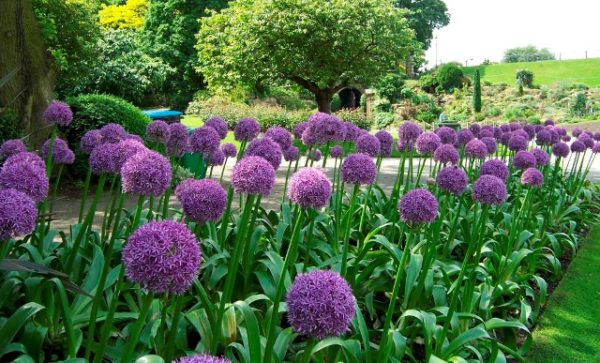
Picking up varieties with different flowering period, you can create a garden of continuous flowering,which will delight bright inflorescences from mid-spring to late autumn.
The ornamental bow is an original plant with inflorescences in the shape of a ball. It is widely used to create colored bouquets, flower beds or flower beds. Uncomplicated care and unpretentiousness make this perennial popular with gardeners and landscape designers.
